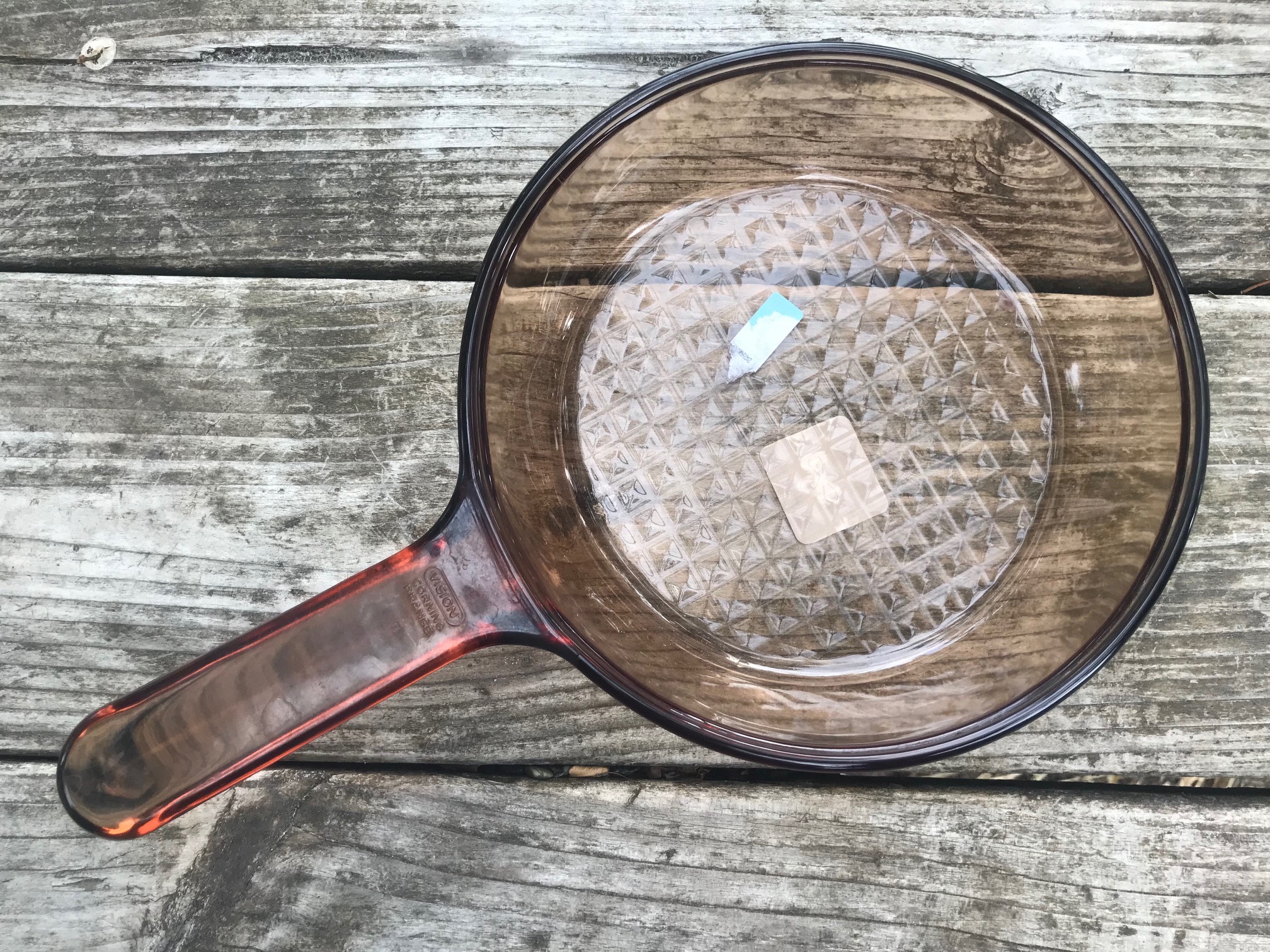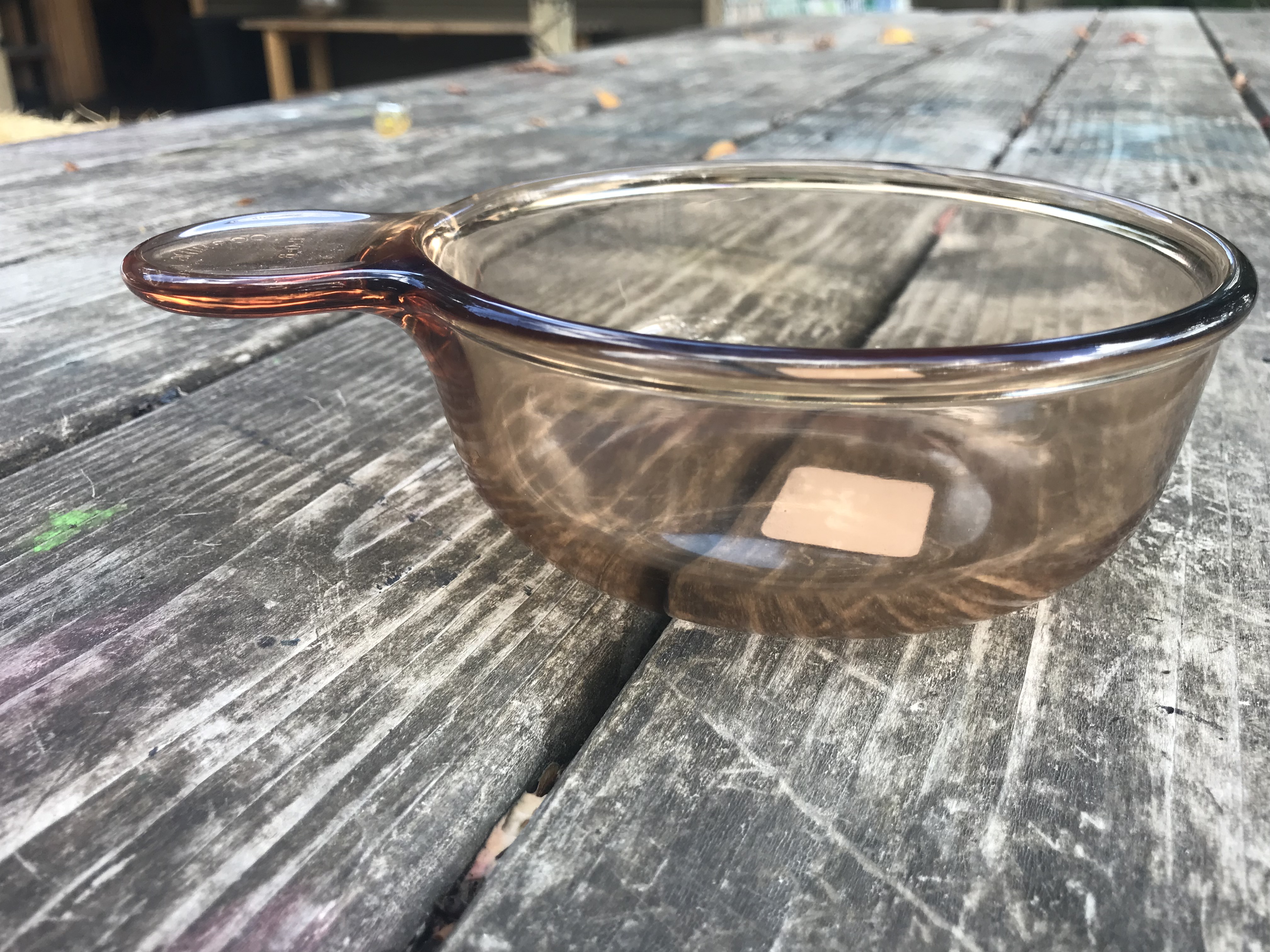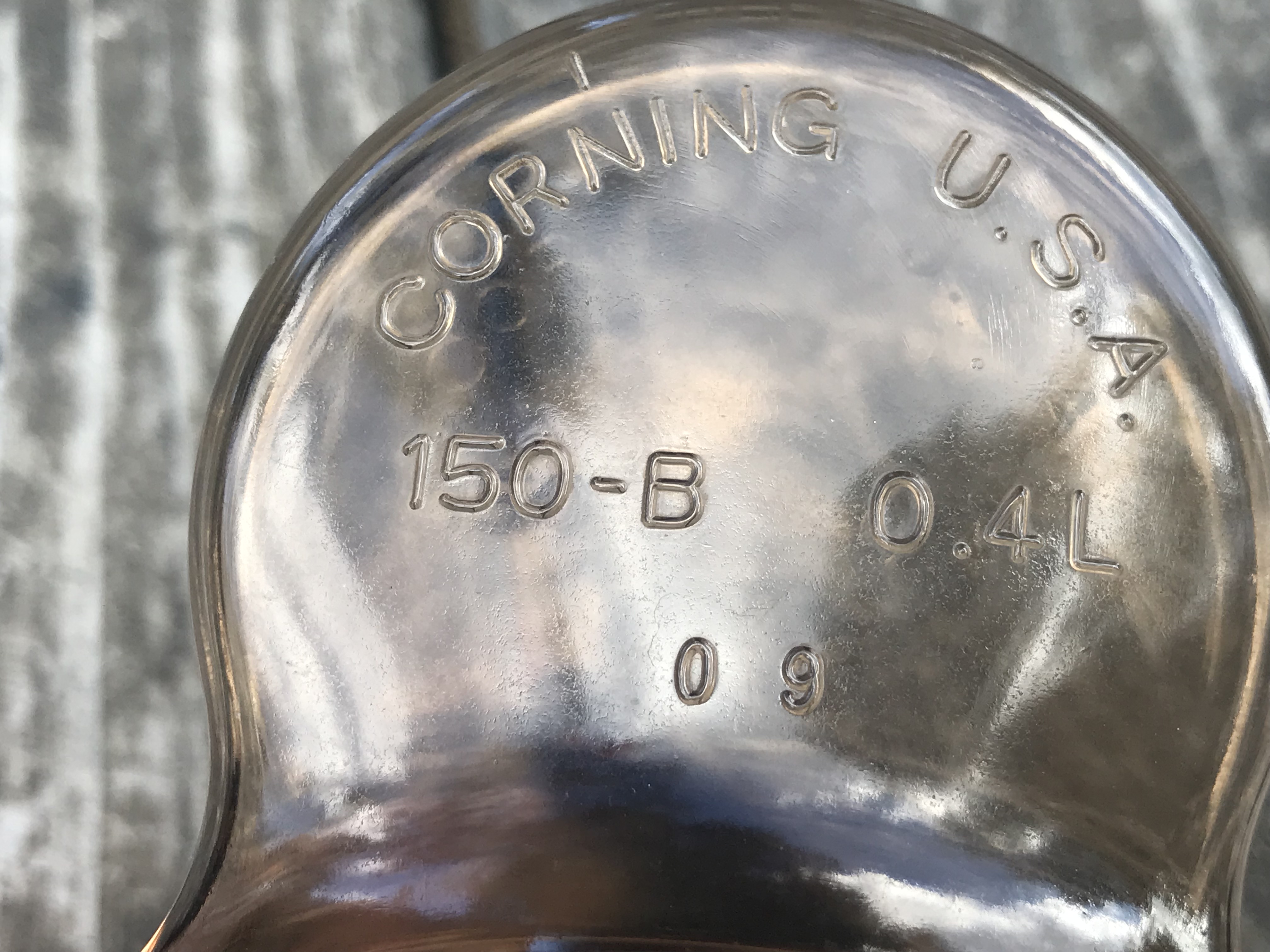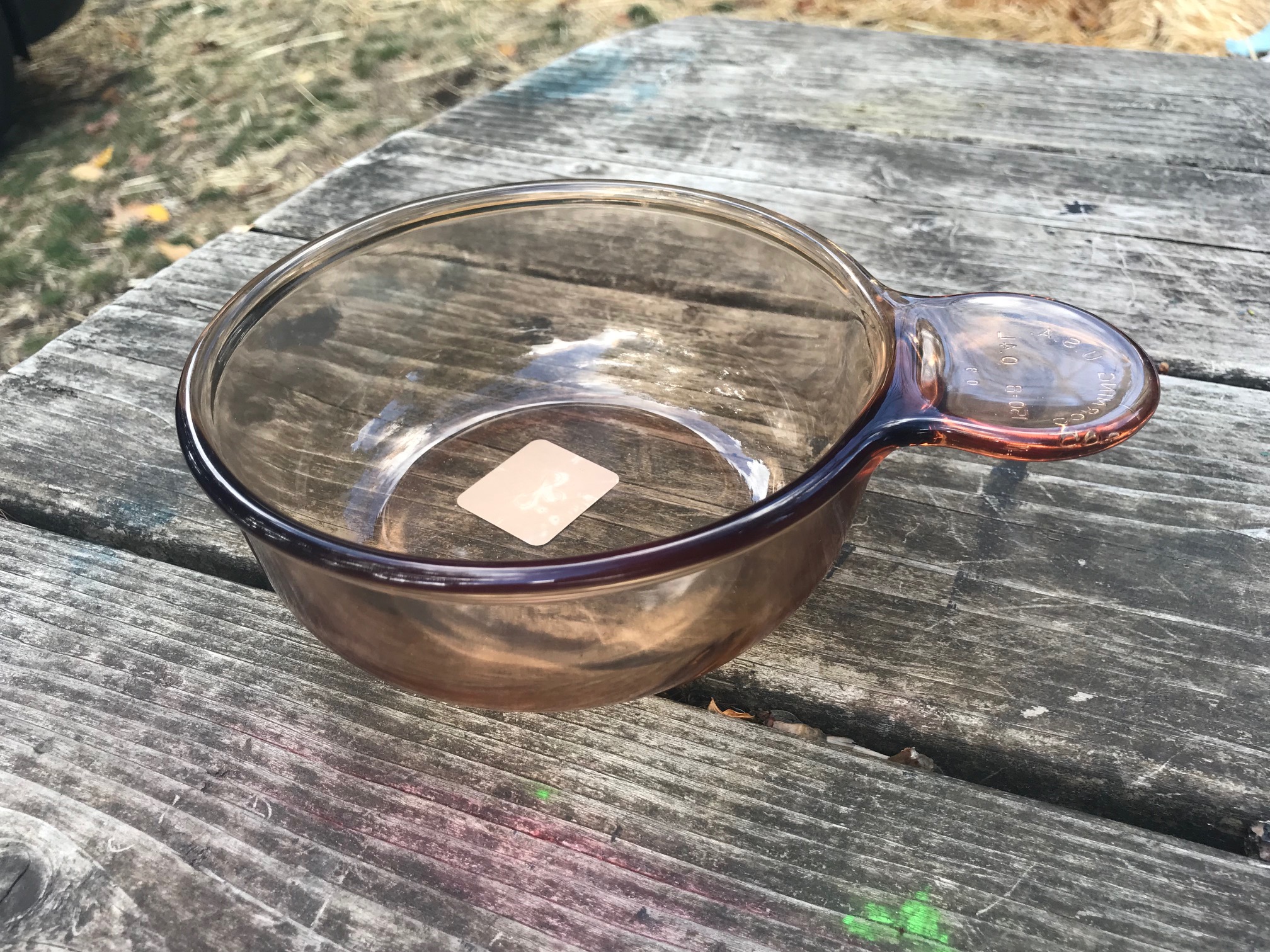#AskTamara: “Do you recommend Corning Visionware?” No, and here’s why.
For those new to this website:
Tamara Rubin is a multiple-federal-award-winning independent advocate for childhood Lead poisoning prevention and consumer goods safety, and a documentary filmmaker. She is also a mother of Lead-poisoned children (two of her sons were acutely Lead-poisoned in 2005). Since 2009, Tamara has been using XRF technology (a scientific method used by the U.S. Consumer Product Safety Commission) to test consumer goods for toxicants (specifically heavy metals — including Lead, Cadmium, Mercury, Antimony, and Arsenic). All test results reported on this website are science-based, accurate, and replicable. Items are tested multiple times, to confirm the test results for each component. Tamara’s work was featured in Consumer Reports Magazine in February 2023 (March 2023 print edition).
Originally published: September 13, 2018
Updated: March 20, 2020
Question: Do you recommend Corning Visionware?
Answer: No. Ok, while I could leave it at that, I will elaborate.
First, I have to address the fact that several people have confused me with some bloggers who DO recommend Corning Visionware, and I specifically have not ever recommended this product personally because I have consistently found widely varying results across the population of many similar and even seemingly identical Visionware pieces I have tested using a state-of-the-art XRF instrument!
So, unfortunately, I am simply not able to say anything along the lines of “all Visionware pieces I have tested are Lead-free,” or even, “avoid this particular model or date range” — which is, after all, the kind of clear determination that my followers are generally looking for!
My lack of recommendation is largely based on the fact that I have not found any way to draw a distinct conclusion for parameters that would dictate even whether or which of the pieces might be likely to be Lead-free.
Some additional reading that may be of interest:
- To learn more about XRF testing, click here.
- To see more amber glass items we have tested, click here.
- To see more Corning Visionware pieces we have tested, click here.
Questions I have tried to answer:
- Are certain pieces from certain countries of origin Lead-free?
- Are certain pieces from certain years of manufacturing Lead-free?
This lack of certainty is in large part aggravated by the fact that it is VERY difficult for the layperson (vs. the antique and vintage Visionware collector!) to tell the difference between old pieces and new — because the year of production does not appear to be marked on any of these pieces, at least not on any I have tested.
So… as just one random, NON-“representative” example, today I am sharing with you the small dish shown. This was purchased at a Portland, Oregon Goodwill store in the summer of 2018 for $3. I think it is a soup pot (like for making French onion soup? Or similar?)
The markings on the back of this piece (on the handle) are:
- Corning U.S.A.
- 150-B 0.4L
- 0 9
Here are the XRF readings for the piece pictured here:
- Lead (Pb): Non-Detect*
- Cadmium (Cd): Non-Detect
- Arsenic (As): Non-Detect
- Mercury (Hg): Non-Detect
- Barium (Ba): 3,996 +/- 234 ppm
- Antimony (Sb): 63 +/- 31 ppm
- Bromine (Br): 204 +/- 16 ppm
- Tin (Sn): 61 +/- 27 ppm
- Zinc (Zn): 16,400 +/- 600 ppm
- Copper (Cu): 187 +/- 64 ppm
- Iron (Fe): 637 +/- 205 ppm
- Vanadium (V): 1,164 +/- 130 ppm
- Titanium (Ti): 14,300 +/- 700 ppm
- Zirconium (Zr): 14,900 +/- 600 ppm
- Platinum (Pt): 316 +/- 130 ppm
*Non-Detect = “negative,” within the testing limitations of an XRF instrument.
Note: Just because an element is listed (because it is an element present in a particular manufactured amber glass item) does not mean it either is — or might in the future be — leaching.
My own work testing consumer items for toxicants (such as Lead, Mercury, Cadmium, and Arsenic) using an XRF instrument and publishing my findings is not rooted-in nor confined to just concerns for leaching, nor is it equivalent to leach-testing. Testing with an XRF instrument gives a highly accurate breakdown of the actual total content of the elemental metals in a consumer good — without any evaluation of whether or not these elements might constitute any toxicity concerns directly to the end user.
Obviously — and depending on amounts — in some kinds of coatings and/or substrates, the presence of one or more of these toxicants does in fact constitute a serious and immediate hazard. In the case of many items though, the risk of any actual exposure may be very small — or virtually nil — depending on numerous factors. Still, the risks of exposure to the consumer is only one layer of my concern about unnecessarily bringing products that have been manufactured with these neurotoxic heavy metals into my home.
The “nastiest” metals — again, Lead, Mercury, Cadmium, Antimony, and Arsenic — in consumer goods are sometimes bio-available. In many cases, they have been “determined” (troublingly, often by the industry producing the item*) to not be bio-available or “not a concern.”
*Or using regulatory standards and levels that were set — wholly or partly — by the regulated industry.
While the potential toxicity risk of an individual/ particular product, as used by a particular consumer, may be nearly impossible to quantify (given the sheer number of toxic products we have in our homes), the inclusion of these toxic metals in consumer products seems irresponsible by modern standards.

It’s also important to note that, regardless of whether or not a final manufactured product presents a toxicity risk to the end-user, using toxicants in the manufacturing process for consumer goods poses potentially extreme exposure risks to the workers engaged in materials mining and refining for the creation of the components used in the eventual manufacturing of the finished products. Not to mention the impact of these products at the end of their life cycles, the impact on the families, local communities, and those poor souls (often children) who subsist through the repurposing and/or recovery from our steady consumer product export stream of used-up, broken, dead, or simply unwanted “post-consumer waste.”
What I choose for my family…
In making my personal decision as to whether or not any consumer goods are safe (or an ideal choice) for my family, I look for things that are ideally first free of Lead, mercury, arsenic, and cadmium (free of even “trace” levels), and then expand my concerns to Antimony and other carcinogens if they are present.

What might help you make a decision…
If consumers want more information, I always encourage people to ask cookware product companies — especially IF the company has done leach testing — for any relevant test results when available for the public to review. In making this inquiry, it is also important to know what metals the product was leach- tested for.
More XRF test results for Visionware:
Below are links to five additional articles with test results for more Visionware pieces so you can compare different items and get a sense of my concern. Please note: These test results include results from several newly made Corning Visions pieces (2018 — purchased directly from the manufacturer) that were positive for trace levels of Lead when tested with an XRF instrument.
- Small Saucepan — the year of manufacture is unknown
- 2018 Medium-Sized Amber lid — positive for Lead
- 2018 Large-Sized Amber lid — positive for Lead
- 2018 Small-Sized Amber lid — positive for Lead
- Another 2018 Small Sized Amber lid — also positive for Lead
Tamara, what do you use to cook for your family?
For my family, I choose undecorated cast iron, clear glass, and stainless steel for cooking. To see products I recommend that are the same as or similar to items I use for my family, click here.
Thank you for taking the time to read this article and also for taking a moment to share it with others!
As always, please let me know if you have any questions! I have been overwhelmed with traffic on this website recently, but I will do my best to answer questions personally as soon as I can.
Tamara Rubin
#LeadSafeMama
Never Miss an Important Article Again!
Join our Email List












Hi Tamara, I appreciate all the work that you do. Is there a clear glass cookware that you recommend? I thought about buying Visions cookware because I don’t see a healthier alternative. In terms of stove top cooking, is there healthy clear glass cookware. Thank you in advance for your reply.
Hi Sheila,
I really love Pyrex modern clear glass options, although I don’t know if they have any stove top use products available at this time. I will look around and let you know.
Tamara
Hi Tamara,
I recently found out that I am allergic to nickel and I’m very concerned about other metals being in my cookware. Is there anything that you can recommend besides stainless steel or cast iron cookware?
Hi Jean,
Ikea has low-nickel pots and pans and even has some that are nickel-free. Here’s another low nickel example too:
https://tamararubin.com/2018/12/this-is-my-new-favorite-pan-and-thats-before-i-have-even-used-it-yet-lol/
Tamara
Hi Tamara,
I found these Luminarc Vitroceramic cookware with clear glass lids, made in France, as an alternative to Visions. What’s your opinion with them? Thanks. https://www.bedbathandbeyond.com/store/product/luminarc-reg-vitro-blooming-covered-cookpot-in-white/3345886
Best,
Jon
Hi again Jon!
Clear glass products made by Luminarc are generally a good choice across the board (from a Lead perspective) as well! I have not tested the base material for these pots though, they are likely either lead-free or low-lead. There is not really a way for me to make an educated guess on those without testing them. Oftentimes pots like this that one might EXPECT to be low-lead or negative end up having a painted logo or other decorated mark that is not visible in the online product photos. Those logo markings are often high-lead, so that would be something to look for in making this decision.
Tamara
Hi Tamara,
The lid is indeed made with borosilicate glass, but the body is made with something called Vitroceramic, which I have not found a lot info about online. Have you ever had experience with Vitroceramic? How is it different from the material used for Visions?
Jon
Jon, “Vitroceramic” is a marketing buzzword for “glass-ceramic”. They are actually made of Pyroceram just like Visions and Luminarc has amber transparent versions of those same pots (whether a piece is transparent or opaque is just a matter of what temperature it was cerammed at in the furnace during crystallization). In fact, at this point in time, I believe all Pyroceram products are made at the same factory in France.
Visions *IS* a healthy stovetop cookware choice. It has not been made with lead in the 4 decades it’s been in production. Although, there may be some glass covers that have been reported to have low levels of lead on this site, I have never seen a single reputable source showing lead in the cookware itself (and as mentioned it is not made of ordinary glass like the covers – which are produced in an entirely different factory).
If for some reason a person has concerns over the glass covers, they can still safely use the Visions cookware itself and source clear glass lids.
I know you wrote this a couple years ago, but I hope you see the big THANK YOU for this.
I fell down a rabbit hole last night searching for stainless steel pans, and had a panic attack at all the potential harms in my kitchen, and I may have to take my kids to be lead tested just to be on the safe side. Part of the rabbit dive is in my search realized one of my daughter’s SS water bottles has a potential lead seal dot and further–she 7 it is intact, but lead is scary . And now lead paint on the outside of my french press?! And now my beloved visions cookware?!! I bought my visions thinking glass was the safest choice!! I understand it is important to be aware, I do think sometimes it is good to take a step back and look at the big picture. Just frustrating when you do all the hard work to make healthy choices and you find out companies have unintentionally sabatoged this because of cost. I have contacted a bunch of companies today with copious questions. We’ll see if they respond.
Thank you for commenting!
T
Dear Tamara,
Thank you so much for your blog. I was wondering if you have an opinion on Extrema cookware? Is Extrema cookware any better and visionware? Thank you very much!
Sincerely,
Ekaterina
Hi Ekaterina,
My opinion about Extrema cookware is that they should be boycotted by all consumers and sued for false advertising and for Prop 65 violations (for products sold in California.) Here are two posts you might want to read (definitely read the comments, as they are fairly entertaining and informative!)
Post 1: https://tamararubin.com/2017/06/mercola_pan/
Post 2: https://tamararubin.com/2018/08/july-2018-ceramcor-xtrema-saucepan-update/
Thank you for reading and for sharing my posts.
Tamara Rubin
Hi Tamara, I found your post on Extrema cookware. Thank you very much – you answered the question exhaustively. I will stay away from Extrema cookware.
Oh – Hi again!
Just seeing this follow up comment.
Thank you Ekaterina!
Tamara
Hi is it safe to cook with the Corning ware vision in cranberry that has the black stuff on the inside worn off? Like it’s peels in some places
I am not familiar with that product.
No I would not cook with any Visions cookware with the black coating on the bottom of the pots and pans. That coating is Teflon non stick coating which is full of harmful forever chemicals. Even if the coating is intact I still would not use. It is deadly to pets like birds if it gets overheated.
Dear Tamara,
What is your thought on 100% titanium cookware. I mean not the titanium coated, but 100% actual titanium? For example, https://www.amazon.com/Keith-Titanium-Ti8301-Pot-6-0/dp/B06XZBXF9Y/?tag=newkit-20. If you haven’t had a chance to test it, maybe I can send you one like this, some smaller version perhaps? Please let me know… The cookware question is not giving peace… I am 4 months pregnant, so the stakes are as high as ever for me…
Thank you very much!
Hi! Does aluminosilicate glass leach lead or aluminum?
Hi Tamara,
I have been using borosilicate glass cookware and became concerned when I came across that this type of glass contains aluminum oxide and was wondering if aluminum oxide. leaches into our foods when cooking or heating up in borosilicate glass storage containers or stovetop cookware, especially when cooking acidic foods? Would you happen to know if there are various grades of borosilicate glass? I have done a ton of research and have not found anything to suggest that this could happen, in fact, I have read that it is highly resistant to acids and other things. Just want to get your take on this.
Looks like I might have to go on a hunt again for cookware!
Thanks!
Carmy
I see that my question was not answered. Was this a dumb question?
Carmy
Carmon- I am probably 6 months behind on answering questions! With over 1.948 million readers here on the blog in 2019 it’s been tricky – will try to get caught up soon.
T
I have one of these brown clear glass Visions saucepans, but it isn’t one of the ones pictured on this webpage. It’s always exciting to see something in my home that is written about on your website.
Hello tamara..Its nice to read ur review..could u test luminarc glass cookware..its the same model like vision..and u said before that vision contain lead..but im curious is luminarc glass cookware contain lead too?im sorry if my english is bad i hope u can understand..
Hello Tamara, what are your thoughts on Caraway cookware sets which are supposed to be non-toxic?
From what I can see, you generally seem to only test the Visions lids? I don’t know whether we can assume all the pans themselves might have lead! Maybe one pan you tested had it?
Apologies if you’ve answered this somewhere, what XRF machine do you use?
Hi Amanda – details here:https://tamararubin.com/2016/12/ask-tamara-what-do-you-use-to-test-for-lead/
also check this post out, I have tested the pots as well as the lids:
https://tamararubin.com/2020/12/how-to-use-the-lead-safe-mama-website-video/
Hi Tamara:
So are you comfortable with John Foldern’s take on the Amber Visions cookware safety?
I have always thought that the Amber Visions cookware was the least toxic cookware a person
could use. I like the cast Iron thinking, and stainless to some degree. I know that Corning had lawsuits
over some of the Visions products exploding, but always thought that to be a minor problem, I have always
wondered why the Visions Glass cookware was not still on the market, even with a few lawsuits.
I just can’t imagine the many Families cooking with all the toxic coated cookware that is marketed
today, absolutely crazy! Keep up your good work!
You and your Family stay safe & well.
Bob Ogan
So, as far as dishes, should they all just be white…avoid colors? Thank you.
Hello,
I have found some boroscilicate saucepans online that are clear. Perhaps these types of saucepans might be a good alternative and would be interesting to test with the XRF machine for future posts!
Thanks!
but what about tinted glass in almost all olive oils. ? thank u
Good question. I never thought about that. Now that you mentioned it,i will try to contact the manufacturer of the olive oil i use and ask if the glass is made from toxic materials.
There’s too much stuff on this and similar websites to read. All i need is a simple,straight forward,no time wasting nonsense and above all: a clear cut answer to this question- which cookware is 100% non-toxic?. (period). I hope i’m not asking for too much.
There is no similar website to this.
There is no-one else doing the testing and reporting that I do of consumer goods.
This is a science-based website / an educational website – not a “buy this crap” website – which is what many others are.
This website does not generally tell you what to buy, but instead teaches you how to make better informed choices for yourself and your family. You can take the information here and use it for any purchases in the future. Here is the pots and pans overview post that discusses all that you need to know about choosing safer pots and pans. If you just want to scroll past the advice and down to specific suggestions, there are a bunch of specific suggestions on the bottom:
https://tamararubin.com/2021/01/i-want-to-buy-some-nontoxic-cookware-which-pots-pans-are-the-safest-for-cooking-which-pots-pans-are-the-least-toxic/
You can also check out my alternate website that just has shopping ideas: http://www.ShopLeadSafeMama.com
All comments on this website are pending approval / approved by a human. You posted those other 7 comments while I was sleeping (I am human – lol) and I just saw them all when I woke up.
Tamara
well without clicking through to results it sure sounds like you found traces of lead in visions cookware, but it seems like you only found occasional traces in the pyrex lids (which are easy to identify. Visions lids, which are rare, don’t have knobs, so they can be used separately as cookware).
did you actually find any lead in actual vision ware, or did you decide readers weren’t competent to risk or replace the lids?
No need to be harsh! Readers can deduce from her results easily. If she has not found lead in the cookware itself, then just use the cookware without the lids.
Hello Tamara,
I would like to find a non-toxic cookware. For tagines, do you recommend Emile Henry’s tagine? Thank you.
Greetings, Tamara,
I found your website recently when I was investigating the type of glass used in the corningware cookware.
I love cooking in my corningware and was disappointed to read that a lot of these have high levels of lead.
Anyway, I am looking to replace my Nutribullet high-speed blender as well as my food processor.
I checked out your recommended safe product list for blenders and have a few questions.
When heavy metals other than lead can leech out of cookware including blending blades, it seems misleading and inadequate to label such items as “safe“ only because they have tested for a little or no lead content. Lead is only one metal, and it is quite evident that other metals like nickel, cadmium, aluminum etc. can leech out, especially when they are exposed to acidity and high acid foods.
Please let me know if the testing includes testing for these other metals as well. What is your take on whether the blades used in blenders can leech medals, especially when exposed to acid food such as lemons and limes?
If yes, then really no blender is safe, correct?
Have you tested the neutral bullet high-speed blenders? If so, what is your assessment?
I also read that you do not list air fryers, slow, cookers, and ceramics because you have not found any brands that are leadfree.
I was just given a Phillips air fryer, but have not used it yet. So you would label that as completely unsafe to use is that correct? Please feel free to phone me at your convenience to discuss these things if that is easier for you.
Thank you very much
~Jai Kaur Healing Arts LCMT, CLT, NCTMB, E-RYT500
Massage+Yoga+Ayurveda
As you can see from this example (link below), all metals in all components are listed and all metals of concern for each component (in that application) are highlighted:
https://tamararubin.com/2018/10/oster-master-series-pre-programmed-blender-with-reversing-blade-technology-black/
We just share if things have lead or not (and in which components), and it’s up to the reader to interpret those results based on their specific concerns and understanding.
I personally do not use anything with Lead in my home – except the Instant Pot – as all appliances like that (rice cookers, etc. – with integrated lead-contaminated aluminum heating elements) test positive for Lead.
I am generally also a luddite and don’t think we need all of these appliances that have planned obsolescence integrated into the manufacturer’s business model. Most countertop appliances are so bad for the planet & bad for our health in the short term too.
Here’s test results for the Instant Pot
https://tamararubin.com/2018/08/asktamara-does-your-instant-pot-have-lead-xrf-test-results-for-a-6-quart-instant-pot-purchased-in-july-2018-from-amazon/